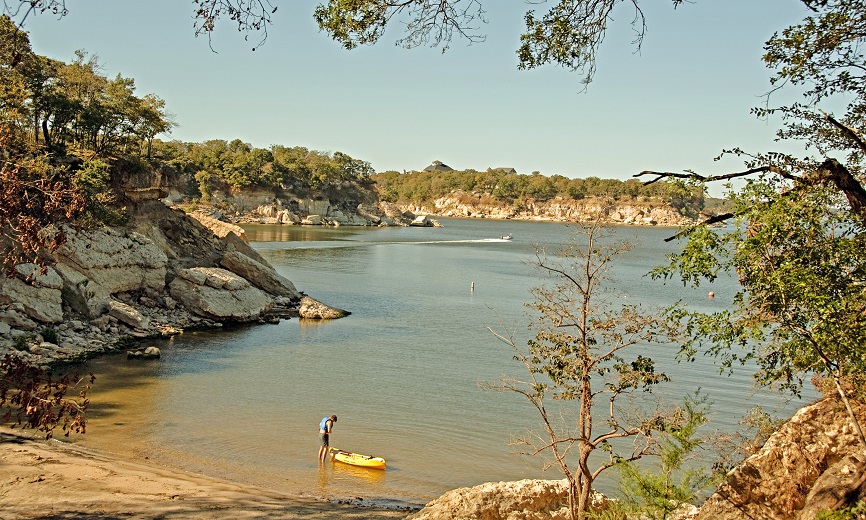Some of the nicest lakes in Texas
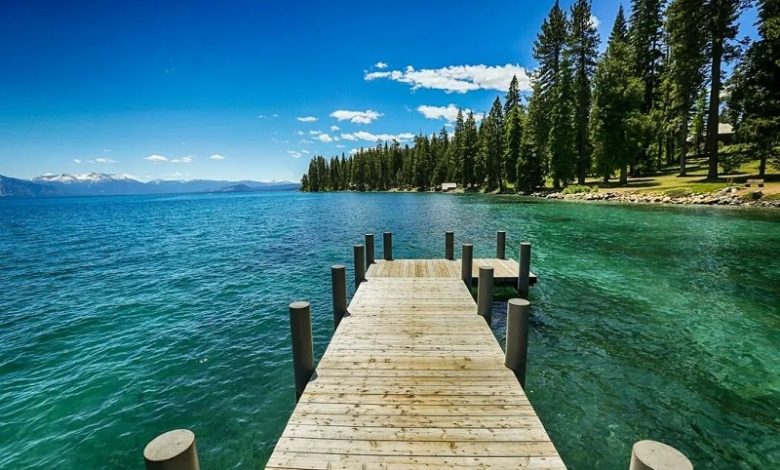
Texas – You can visit a park, go on a holiday, go hiking and many other things if you want to connect with the nature and get away from the urban jungle and every day life. But being close to water has something special. And the reason is simple: water is energy!
Depending on where you live, you might have plenty of options for visiting a lake close to your residence. And doing that regularly will definitely improve your overall mental health. I was recently traveling to Texas and visited several lakes as a part of weeks-long journey with a friend of mine. We also visited several cities in the North Texas area, but the lakes are something special.
So, I made research to find out what some of the nicest lakes in Texas are and this is the list:
Rockwall Lake, also known as Lake Ray Hubbard
Rockwall Lake, which is also called Lake Ray Hubbard, is a peaceful spot only a short drive from Dallas. It is in the area where Dallas, Kaufman, Collin, and Rockwall counties meet. Rockwall News says that this 22,745-acre reservoir, which was created by the Rockwall-Forney Dam on the East Fork Trinity River, has a depth of up to 40 feet and is a hub for adventure activities and lots of animals. For people who love the water and nature, it’s a paradise. You can fish for many species, go boating, and do many other water sports. People can hike, bike, have picnics, and watch birds along its shores, enjoying the wide range of wildlife and beautiful views.
Check also: The Forest Theater: From cultural epicenter to beacon of renewal
The background of the lake and its infrastructure are both very interesting. At first, it was called Forney Lake. It was named after Ray Hubbard, who was head of the Dallas Parks and Recreation System board from 1943 to 1972. These days, many bridges and causeways join them, such as the Interstate 30 and President George Bush Turnpike. Along its shore, places like Rowlett Creek Preserve, The Harbor at Rockwall, and Lake Ray Hubbard State Park let you shop, eat, and do many outdoor activities. Rockwall Lake is a must-see place near Dallas for both thrill-seekers and people who just want to relax. You can go for a day trip or stay for a longer time.

Toledo Bend Reservoir
According to AZ Animals, the Toledo Bend Reservoir is a popular place to swim. It spans the state line between Texas and Louisiana and includes Shelby, Sabine, and Newton counties. This lake, which covers 181,600 acres and goes as deep as 110 feet, was dammed up on the Sabine River in 1967. It’s famous for its water conditions, which change from 1 to 5 feet and have different levels of clarity in different areas. This pond is owned and managed by the Sabine River Authority. It has many types of aquatic plants and is famous for having lots of fish, including largemouth bass, crappie, catfish, and white and striped bass. Additionally, it has fishing rules that work for people from both Texas and Louisiana, making it a unique experience to fish across state lines.
Check also: Dallas’ office buildings transform into residential spaces
Toledo Bend Reservoir is a great place for nature lovers and anglers alike. It has great fishing for largemouth bass, crappie, catfish, and striped bass, which are all stocked every year. There is aquatic greenery, standing timber, and flooded terrestrial vegetation in the habitat, which makes it perfect for gamefish. The upper and lower parts of the pond are great for fishing in different ways because the water clarity and amount of plants vary. It’s also known for having large numbers of sunfish, especially bluegill and redear sunfish. For anglers, the pond has information on how to fish successfully throughout the year, including advice on the best bait and techniques for each type of fish.
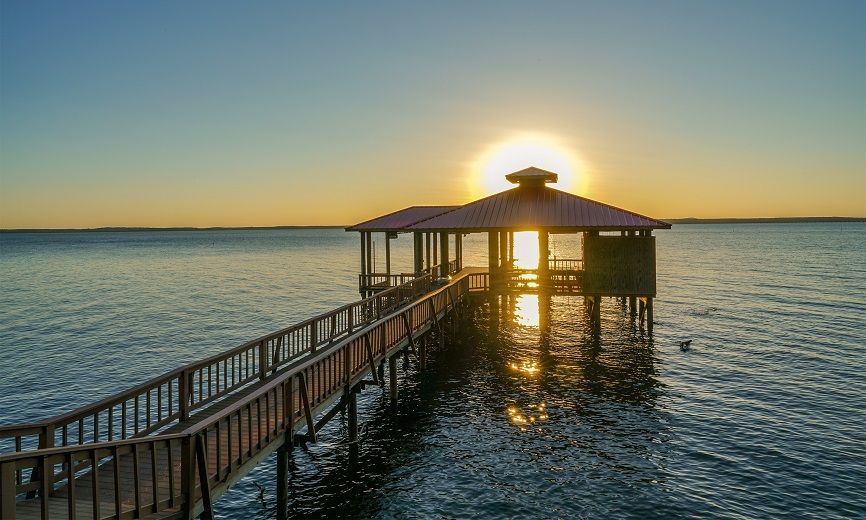
Sam Rayburn Reservoir
The Sam Rayburn Reservoir is the second-largest lake in Texas. It is on the Angelina River in Jasper County and covers 114,500 acres. According to Texas Parks and Wildlife Department, the deepest point of the lake is 80 feet. This man-made lake, which opened in 1965, is a famous place for recreation, with activities like camping and fishing. The water level changes a lot, about 7 feet a year, and the quality varies from clear in the lower lake to off-color in the upper lake. The U.S. Army Corps of Engineers takes care of the lake, which is home to hydrilla, American lotus, and pondweed, among other plants.
Check also: Victim hospitalized after altercation on southeast side of San Antonio
A lot of people go to Sam Rayburn Reservoir to fish. The largemouth bass, crappie, catfish, and white bass populations are famous. The best time to fish there is all year, and the most famous game fish are largemouth bass. The habitat around the reservoir includes aquatic plants that are underwater, standing trees, and flooded land plants. The habitat changes with the seasons and every year because the water level changes. For anglers, different strategies work best at different times of the year. For example, fishing for largemouth bass is good all year, and fishing for crappies is always great, especially near brush piles and creek channels.
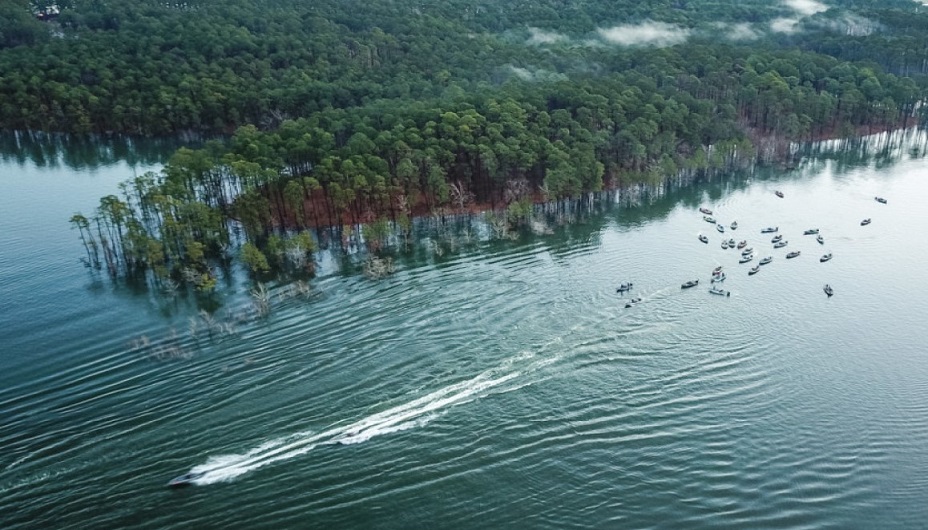
Falcon International Reservoir
There are 154.63 square miles of Falcon Lake, which is also called Falcon Reservoir. It is the third-largest lake in Texas. This man-made lake is 40 miles east of Laredo on the Rio Grande River. It was built to prevent flooding, help with irrigation, generate energy through hydropower, and save water. It was dammed up in 1954 and has an area of 83,654 acres. At the dam, it gets as deep as 110 feet. Extreme changes in the lake’s water level happen all the time, from 40 to 50 feet or more. The water is cloudy in the top part and dirty in the lower part. The International Boundary and Water Commission is in charge of the pond, which has mostly hydrilla as its aquatic plants.
Check also: Fort Worth set to boost economy with eco-friendly technology and research center
People love to fish in Falcon Lake, especially for largemouth bass and channel catfish. It is thought to be one of the best lakes in the state for largemouth bass. The lake has rules about fishing, like only catching five alligator gar per day on the Texas side, with no minimum length limit. You need a Mexico fishing pass to go fishing in Mexican waters. There are several fishing guides on the lake, and the Zapata Chamber of Commerce can give you more information. Even though the recent drought has hurt the populations of white bass and crappie, Falcon Lake is still a popular fishing spot. To win bass events, anglers usually need to catch an average of 5 to 6 pounds per fish. The local Chamber of Commerce and Falcon State Park both have fishing plans and other useful information.
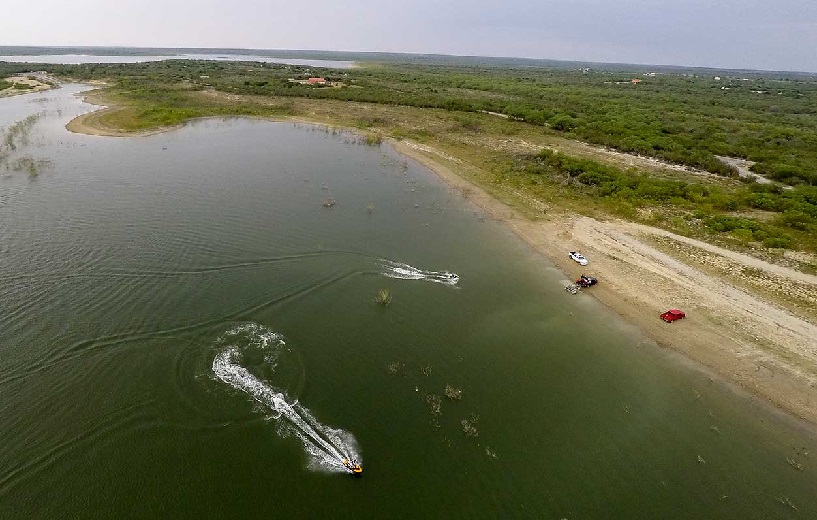
Lake Texoma
Lake Texoma, with a surface area of 139 square miles (36,000 acres), straddles the Texas-Oklahoma border and is a prominent destination for both tourists and anglers. The lake, impounded in 1944 on the Red River, is known for hosting around 70 fish species and attracts nearly 6 million visitors annually. It has a maximum depth of 100 feet and experiences annual water level fluctuations of 5-8 feet. Managed by the U.S. Army Corps of Engineers, the lake’s water conditions vary from moderate to clear clarity. Although aquatic vegetation is not abundant, the lake has some water willow, American lotus, floating heart, and bushy pondweed.
